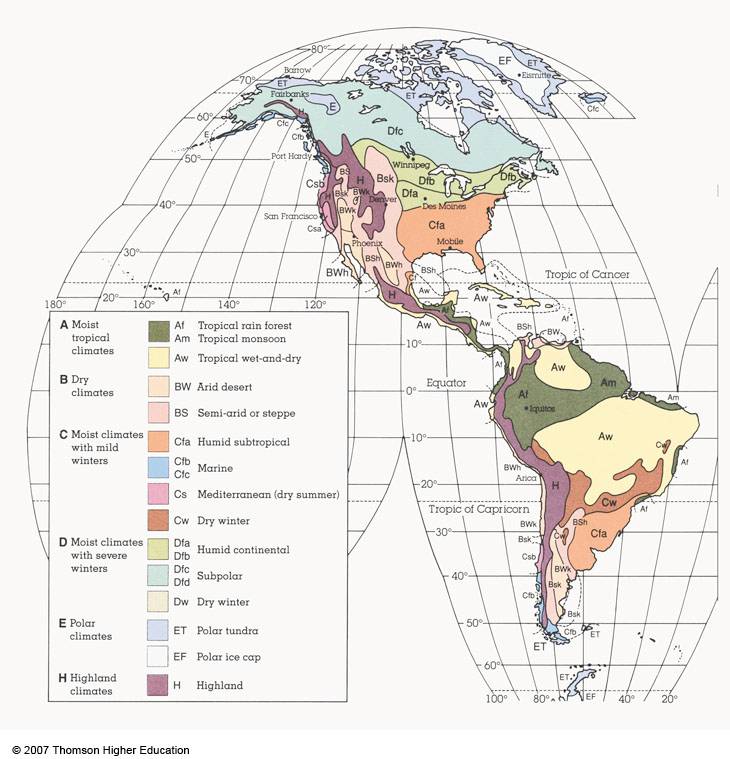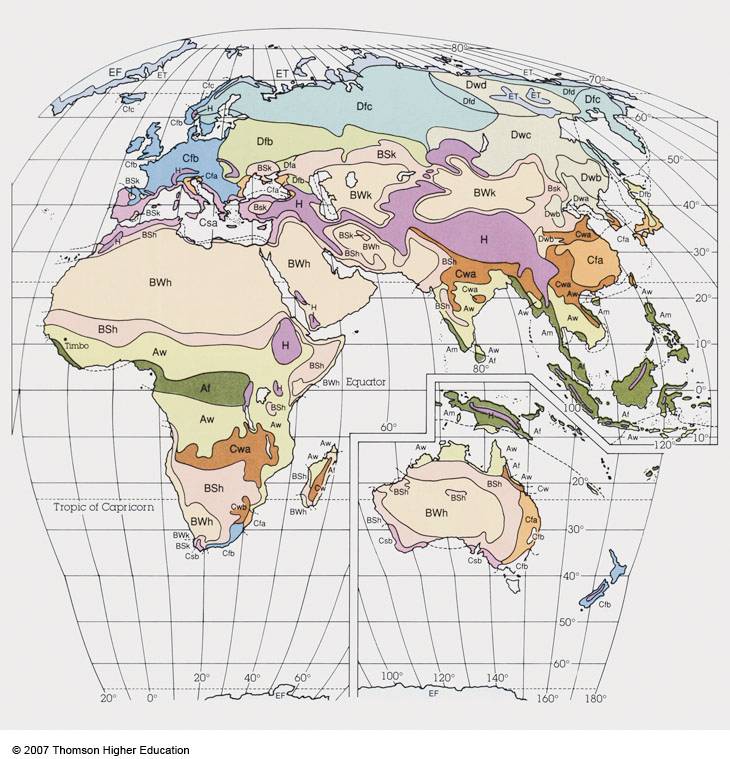Global Climate - Moist Subtropical Mid-latitude Climates
General Characteristics - humid with mild winters (average temperature of the coldest month below 18°C (64°F) and above -3°C 27°F))
- have distinct summers and winters
- ample precipitation
Extent - on the eastern and western regions of most continents, from about 25°-40° latitude
Major types: -
- humid subtropical (Cfa)
- largely found along east coasts of continents... why?
- hot, muggy summers.... regions are usually on western side of subtropical highs
- mild winters, some snow, frost, ice, though heavy snows are rare
- afternoon convection is common in summer, tropical storms also
- example from mobile, Alabama
- marine (Cfb)
- extend to 40°-60° latitude on the western sides of continents
- prevailing westerlies moderate the climate near the coast, compared to the same latitude further inland
- relatively mild winters, cool summers - small annual temperature change
- lots of low clouds, fog, drizzle, especially during fall, winter, and spring
- little snow, except at higher altitudes in the mountains
- example for Port Hardy, Vancouver, Island
Climate Map - West |
Climate Map - East |
 |
 |
Major types, continued: -
- dry-summer subtropical (also referred to as
Mediterranean) (Cs)
- similar to marine (Cfb), but with a more pronounced dry season
- found to the south of marine regions, where high pressure areas are more dominant (Oregon, California)
- mild-hot, dry summer
- mild, wet winters- subtropical high moves south allowing mid-latitude cyclones to affect the region
- further subdivide Mediterranean into:
- coastal Mediterranean (Csb)
- moderated by coastal upwelling
- mild, summertime highs in the 70's, lows in the 50's-60's
- example at San Francisco, CA
- interior Mediterranean (Csa)
- much warmer, summertime highs in the 90's
- example at Sacramento, CA
- coastal Mediterranean (Csb)